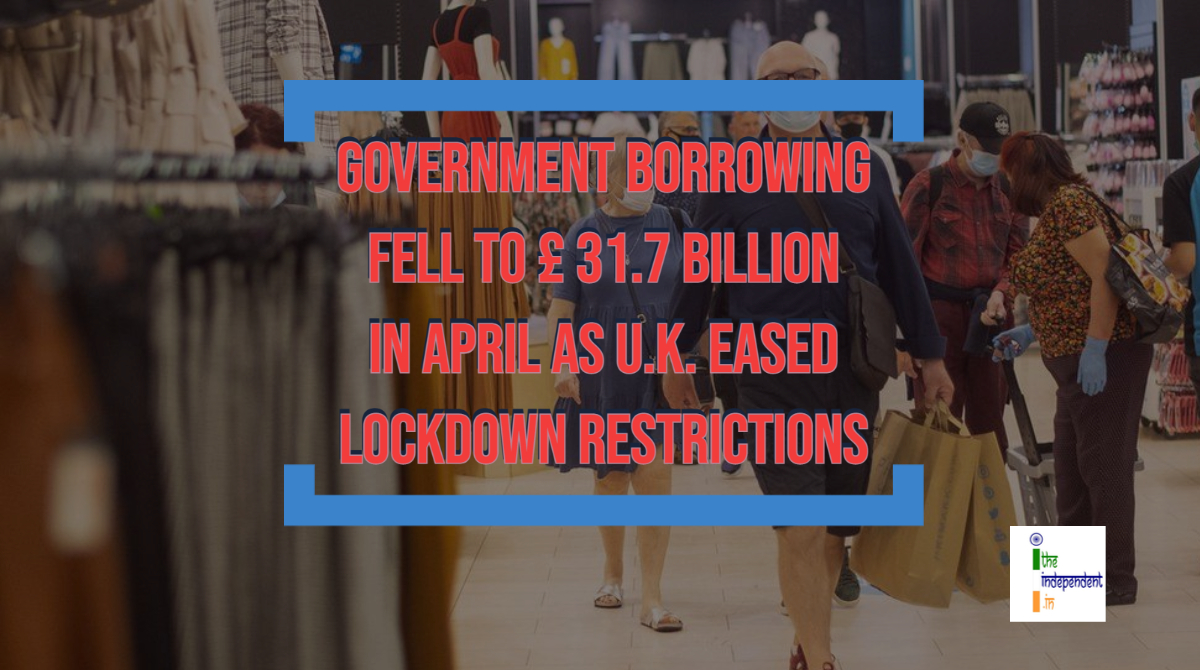
The reduction in Government borrowing was majorly driven by opening up of economic activities in U.K.
As per the Office of National Statistics (ONS) of United Kingdom (U.K.), the Government borrowing in April 2021 fell to £ 31.7 billion, which is £ 15.6 billion lesser as compared to April 2020.
The reduction in Government borrowing was majorly driven by opening up of economic activities in U.K., which had up till now remained closed due to Coronavirus (COVID-19). However, this is the second highest borrowing figure for April, ever since ONS started keeping records.
The ONS estimates that the Government borrowed a total of £ 300.3 billion in the financial year to March 2021, slightly lower than its previous estimate of £ 303.1 billion.
Speaking on the occasion, Senior U.K. Economist at Capital Economics – Ruth Gregory said, “April’s public finances figures showed that the government’s financial position isn’t as bad as the Office for Budget Responsibility (OBR) predicted only two months ago, reinforcing our view that the tax hikes and spending cuts that most fear may be avoided.”
Taking it to twitter, ONS tweeted,
Public sector net borrowing excluding public sector banks, was £31.7 billion in April 2021.
— Office for National Statistics (ONS) (@ONS) May 25, 2021
This is the second-highest April borrowing since monthly records began in 1993, £15.6 billion less than in April 2020 https://t.co/jYiHbV0UUt pic.twitter.com/GUIe1e1c7q
The ONS said the cost of measures to support individuals and businesses during the pandemic meant that day-to-day spending by the Government rose by £ 204.1 billion to £ 942.7 billion last year.
The Government borrowing has been hitting record levels with billions being spent on measures such as furlough payments. The huge amount of borrowing over the past year has now pushed Government debt up to £ 2.17 trillion, which is 98.5% of Gross Domestic Product (GDP).
Talking of Government’s debt, ONS further tweeted,
Public sector net debt excluding public sector banks was £2,171.1 billion at the end of April 2021.
— Office for National Statistics (ONS) (@ONS) May 25, 2021
At around 98.5% of GDP, this is the highest ratio since the 99.5% recorded in March 1962 https://t.co/RJHeMfy8UD pic.twitter.com/yYpqHz9jgd
Tax receipts in April 2021 were £ 58 billion, which was slightly up from the same period for the last year. In April 2020, tax receipts were £ 54.2 billion. This had been possible as lockdown restrictions eased and restaurants, pubs, hairdressers and gyms resumed operations.
To reduce Government borrowing, there won’t be a need for big spending cuts or tax rises. Instead, it will drop naturally as the economy expands, tax receipts from income tax and Value Added Tax start coming in. Moreover, Government’s reduced expenditure on supporting the economy and the public will also help in reducing the borrowing.
While scarring should be smaller than after past recessions, given low unemployment rate, there will be significant costs in the form of diminished investment and an unprecedented exodus of non-U.K. nationals.







